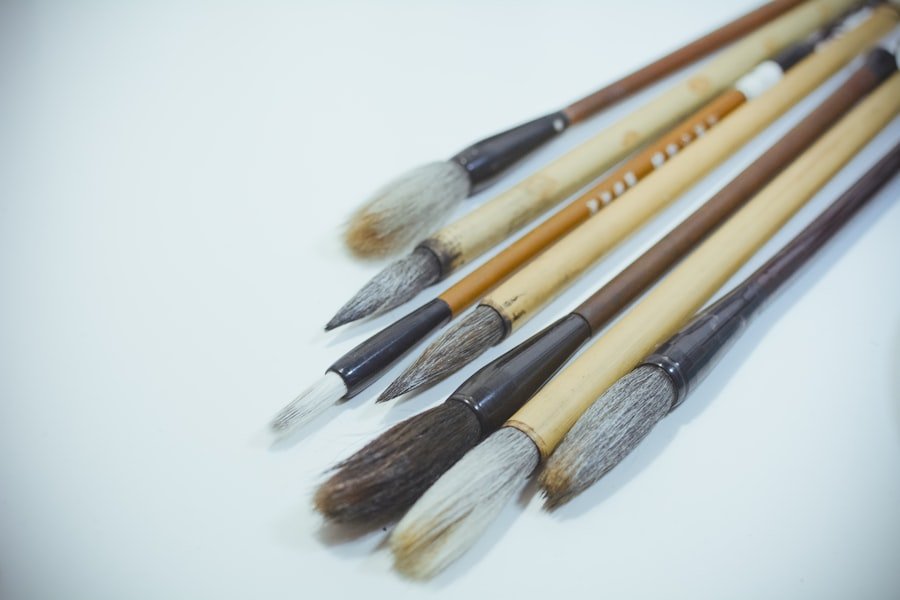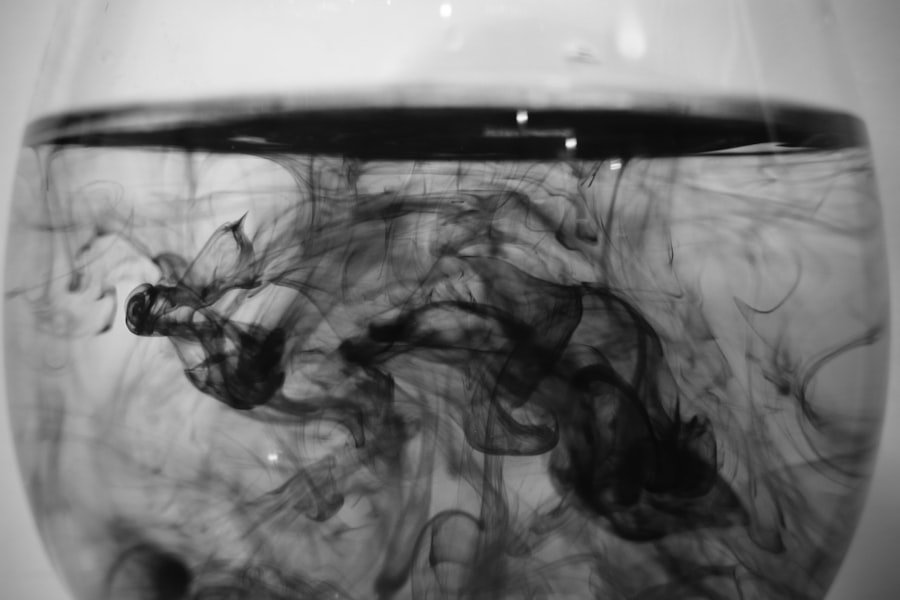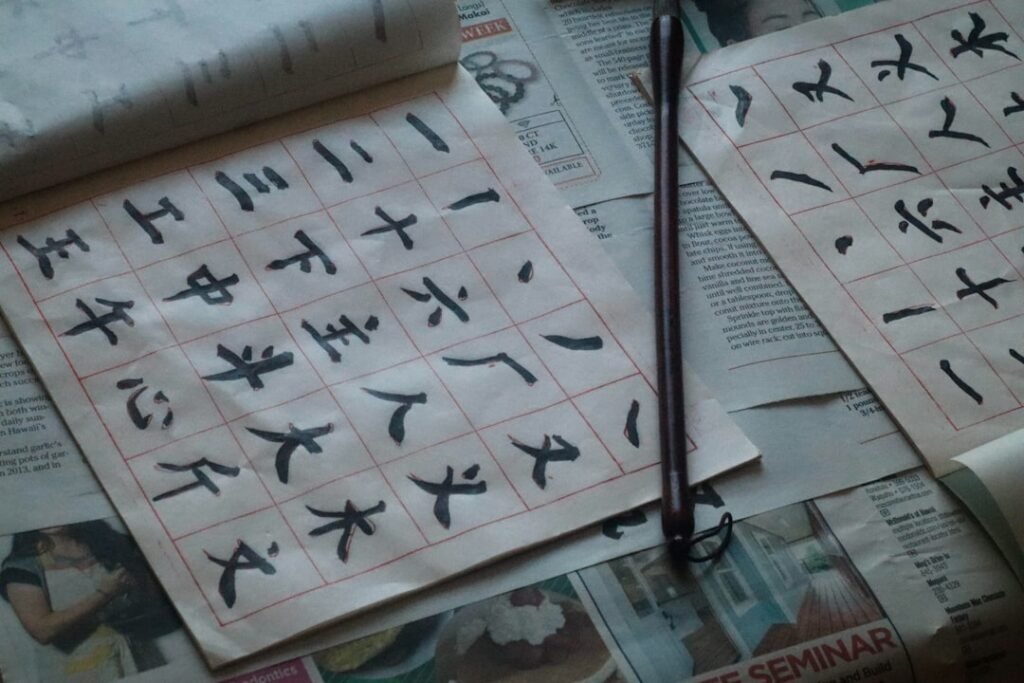Chinese calligraphy, an ancient and revered art form, transcends mere writing to embody a profound cultural expression that has evolved over millennia. It is not simply the act of inscribing characters; rather, it is a harmonious blend of aesthetics, philosophy, and emotion. Each stroke of the brush is imbued with meaning, reflecting the calligrapher’s inner thoughts and feelings.
The beauty of Chinese calligraphy lies in its ability to convey not just words, but also the spirit and essence of Chinese culture. As one delves into this art form, they discover a world where tradition meets creativity, and where each character tells a story that resonates with the heart and mind. The practice of calligraphy is deeply rooted in Chinese history, serving as a vital means of communication and artistic expression.
It has been a significant part of Chinese education and culture for centuries, often regarded as one of the highest forms of art. The elegance of the brush strokes, the balance of composition, and the rhythm of the writing all contribute to the unique beauty of this art form. In contemporary society, Chinese calligraphy continues to thrive, attracting enthusiasts and practitioners worldwide.
Institutions like the LC Chinese School in Oslo offer courses that not only teach the technical skills required for calligraphy but also immerse students in the rich cultural heritage that accompanies this timeless practice. Master the art of Chinese calligraphy. Enroll now at the LC Chinese School in Oslo.
Table of Contents
ToggleSummary
- Chinese calligraphy is a traditional art form that has a rich history and cultural significance in China.
- The origins of Chinese calligraphy can be traced back to oracle bones and bronze inscriptions, which were used for divination and record-keeping.
- Seal script and clerical script were important developments in the evolution of Chinese calligraphy, influencing later styles.
- Buddhism had a significant impact on Chinese calligraphy, leading to the creation of new styles and techniques.
- The Tang and Song dynasties are considered the golden age of Chinese calligraphy, producing many renowned calligraphers and masterpieces.
Origins of Chinese Calligraphy: Oracle Bones and Bronze Inscriptions
The origins of Chinese calligraphy can be traced back to ancient times, with its roots embedded in oracle bones and bronze inscriptions. Oracle bones, dating back to the Shang Dynasty (c. 1600–1046 BCE), were used for divination purposes.
These bones, typically from oxen or turtles, were inscribed with early forms of Chinese characters that served as a means to communicate with ancestors and deities. The inscriptions on these oracle bones represent some of the earliest examples of written Chinese, showcasing a rudimentary yet significant step towards the development of calligraphy as an art form. Bronze inscriptions emerged during the Zhou Dynasty (c.
1046–256 BCE) and further advanced the practice of writing. These inscriptions were often engraved on ritual vessels and served both practical and ceremonial purposes. The characters used in bronze inscriptions were more refined than those found on oracle bones, indicating a growing sophistication in writing techniques.
This period marked a pivotal moment in the evolution of Chinese calligraphy, as it laid the groundwork for future scripts and styles. The transition from simple pictographs to more complex characters reflects not only advancements in writing but also the cultural and philosophical developments occurring within society at that time.
The Development of Seal Script and Clerical Script

As Chinese writing evolved, so too did its styles, leading to the emergence of seal script and clerical script. Seal script, known as “zhuanshu,” became prominent during the Qin Dynasty (221–206 BCE) and was characterised by its intricate and stylised characters. This script was primarily used for official seals and inscriptions, which were often carved into stone or metal.
The aesthetic appeal of seal script lies in its bold strokes and flowing forms, making it a favourite among calligraphers who sought to express their artistic flair. Clerical script, or “lishu,” developed later during the Han Dynasty (206 BCE–220 CE) as a more practical writing style for everyday use. It was characterised by its clear and legible characters, making it suitable for administrative documents and records.
The transition from seal script to clerical script marked a significant shift in the function of writing; it became more accessible to the general populace rather than being confined to elite circles. This democratization of writing paved the way for greater literacy and cultural exchange within society, further solidifying the importance of calligraphy in Chinese culture.
The Influence of Buddhism on Chinese Calligraphy
The introduction of Buddhism to China during the Han Dynasty had a profound impact on various aspects of Chinese culture, including calligraphy. As Buddhist texts were translated into Chinese, the need for skilled calligraphers to transcribe these sacred writings became increasingly important. This led to the development of new styles that incorporated elements of Buddhist philosophy and aesthetics.
Calligraphers began to experiment with brush techniques that reflected the meditative qualities associated with Buddhist practices. Moreover, Buddhist calligraphy often emphasised simplicity and clarity, mirroring the teachings of Buddhism itself. The act of writing became a form of meditation for many practitioners, allowing them to connect with their spiritual beliefs while honing their artistic skills.
This fusion of spirituality and artistry enriched the tradition of Chinese calligraphy, resulting in a diverse array of styles that continue to inspire artists today. The influence of Buddhism on calligraphy not only enhanced its aesthetic qualities but also deepened its significance as a means of personal expression and spiritual exploration.
The Golden Age of Chinese Calligraphy: Tang and Song Dynasties
The Tang (618–907) and Song (960–1279) dynasties are often regarded as the golden age of Chinese calligraphy, marked by an unprecedented flourishing of artistic expression and innovation. During this period, calligraphers such as Wang Xizhi and Yan Zhenqing emerged as towering figures in the art form, each contributing their unique styles that would influence generations to come. Wang Xizhi’s “Running Script” is particularly celebrated for its fluidity and grace, while Yan Zhenqing’s “Regular Script” is revered for its strength and clarity.
The Tang dynasty was characterised by a spirit of openness and cultural exchange, which allowed for the cross-pollination of ideas between different artistic disciplines. Calligraphy was not only seen as a means of communication but also as a reflection of one’s character and intellect. Scholars and artists alike engaged in spirited discussions about aesthetics and philosophy, leading to a deeper understanding of the relationship between calligraphy and other art forms such as painting and poetry.
This synergy between disciplines enriched the cultural landscape of China during this era, solidifying calligraphy’s status as a revered art form.
The Emergence of Running Script and Cursive Script

As calligraphy continued to evolve through the Tang dynasty into the Song dynasty, two significant styles emerged: Running Script (“xingshu”) and Cursive Script (“caoshu”). Running Script is characterised by its semi-connected characters that allow for a more fluid writing style while maintaining legibility. This style became popular among scholars who sought to express their thoughts quickly yet elegantly on paper.
The ability to write swiftly without sacrificing beauty made Running Script an essential tool for poets and writers alike. Cursive Script, on the other hand, represents a more abstract interpretation of characters, where strokes are often simplified or exaggerated for artistic effect. This style is less concerned with legibility than with conveying emotion and spontaneity through brushwork.
Cursive Script allows for greater personal expression, enabling calligraphers to infuse their work with individuality and flair. Both Running Script and Cursive Script reflect the dynamic nature of Chinese calligraphy during this period, showcasing how artists adapted their techniques to suit their creative needs while pushing the boundaries of traditional forms.
Calligraphy as an Art Form: Ming and Qing Dynasties
The Ming (1368–1644) and Qing (1644–1912) dynasties witnessed a further elevation of calligraphy as an esteemed art form within Chinese society. During this time, calligraphers began to explore new materials and techniques, leading to innovations in brushwork and ink application. The Ming dynasty saw a resurgence in interest in classical styles, with many artists seeking inspiration from earlier masters while also developing their unique interpretations.
In contrast, the Qing dynasty was marked by a growing emphasis on individual expression within calligraphy. Artists began to experiment with unconventional formats and compositions, breaking away from traditional constraints. This period also saw the rise of female calligraphers who contributed significantly to the art form, challenging gender norms within society.
The flourishing of calligraphy during these dynasties not only solidified its status as an art form but also highlighted its role as a means of personal expression and cultural identity.
Modern Innovations and Contemporary Chinese Calligraphy
In recent years, contemporary Chinese calligraphy has undergone significant transformations as artists embrace modern innovations while remaining rooted in tradition. Many contemporary calligraphers experiment with mixed media, incorporating elements such as photography or digital technology into their work. This fusion of traditional techniques with modern aesthetics has resulted in a vibrant dialogue between past and present, allowing for new interpretations of classic forms.
Moreover, contemporary calligraphers often engage with global themes and issues through their work, reflecting the interconnectedness of today’s world. This evolution has led to increased recognition for Chinese calligraphy on international platforms, where artists showcase their unique perspectives while honouring their cultural heritage. As a result, contemporary Chinese calligraphy continues to thrive as an evolving art form that resonates with audiences both within China and beyond.
The Role of Calligraphy in Chinese Culture and Society
Calligraphy holds a special place in Chinese culture, serving not only as an artistic pursuit but also as a means of fostering social connections and cultural identity. It is often regarded as a reflection of one’s character; thus, mastering this art form is seen as an essential aspect of personal development within traditional education systems. Calligraphy competitions are common events where individuals showcase their skills while fostering camaraderie among participants.
Furthermore, calligraphy plays a significant role in various cultural practices such as poetry recitation or tea ceremonies, where beautifully inscribed scrolls enhance the overall experience. The act of writing itself is often viewed as meditative; many practitioners find solace in the rhythmic movements of brush strokes as they connect with their inner selves. In this way, calligraphy transcends mere aesthetics; it becomes a vehicle for self-expression, cultural preservation, and community engagement.
The Global Influence of Chinese Calligraphy
The influence of Chinese calligraphy extends far beyond its borders; it has captivated audiences worldwide through exhibitions, workshops, and educational programmes. As interest in Asian cultures grows globally, many individuals seek to learn about this ancient art form as a means to connect with its rich history and philosophy. Institutions around the world have begun offering courses on Chinese calligraphy, allowing students from diverse backgrounds to explore its intricacies.
In particular, schools like LC Chinese School in Oslo have recognised this growing interest by providing comprehensive courses that cater to both beginners and advanced practitioners alike. These courses not only teach technical skills but also delve into the cultural significance behind each stroke—enabling students to appreciate calligraphy not just as an art form but also as an integral part of Chinese heritage.
The Enduring Legacy of Chinese Calligraphy
The enduring legacy of Chinese calligraphy is evident in its continued relevance within contemporary society—a testament to its rich history and cultural significance. From its origins in oracle bones to modern innovations that blend tradition with contemporary aesthetics, this art form has evolved while remaining deeply rooted in its heritage. As individuals around the world embrace Chinese calligraphy through courses offered at institutions like LC Chinese School in Oslo, they contribute to preserving this timeless practice for future generations.
Ultimately, Chinese calligraphy serves as more than just an artistic endeavour; it embodies centuries’ worth of philosophy, culture, and emotion—making it an invaluable part of human expression across time and space. As we reflect on its journey through history—from ancient inscriptions etched into oracle bones to modern interpretations that challenge conventions—we recognise that Chinese calligraphy will continue to inspire creativity while fostering connections among people across cultures for years to come.
Master the art of Chinese calligraphy. Enroll now at the LC Chinese School in Oslo.







